Search the Special Collections and Archives Portal
Search Results
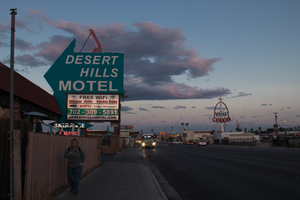
Photographs of Desert Hills Motel sign, Las Vegas (Nev.), April 18, 2017
Date
Archival Collection
Description
Site address: 2121 Fremont St
Sign owner: Desert Hills Motel Enterprises Inc
Sign details: 0.71 acre lot with an original construction year of 1956.
Sign condition: 4 - recently redone, working neon and incandescent bulbs, bird spikes on top.
Sign form: Monument Sign
Sign-specific description: Directional monument sign, giant arrow used to direct guests into parking lot. Basic design, blue background for the arrow, reader board, and support pole, white lettering for "Desert Hills Motel" outlined with skeleton neon tubing. Little geometric diamonds framing "Vacancy" and "Entrance" with skeleton neon tubing framing that as well. "No Vacancy" has red neon for coloring. Reader board would of internally illuminated. The word "Desert Hills" glowed a pale blue, "Motel" glowed a bright red, and there was an outline of neon around the arrow of the sign. Skeletal neon only it seems no fill in.
Sign - type of display: Neon, internally illuminated reader board
Sign - media: Steel and Plastic
Sign environment: Surrounded by other motels and residential
Sign manufacturer: No external markings for sign company or designer
Sign - date of installation: c. 1957
Sign - date of redesign/move: Recently repainted, but exact date unknown
Survey - research locations: Motel website, old motel literature, assessor's website
Survey - research notes: Same owner as the Roulette Motel
Surveyor: Danny Jacobs
Survey - date completed: 2017-08-12
Sign keywords: Neon; Steel; Plastic; Reader board; Internally illuminated; Directional; Pole sign
Mixed Content
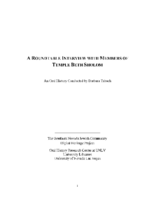
Transcript of roundtable interview with members of Temple Beth Sholom by Barbara Tabach, January 14, 2015
Date
Archival Collection
Description
In this roundtable discussion, members of Temple Beth Sholom discuss the history of the long-established congregation. Interviewees are Sandy Mallin, Oscar Goodman, Jared Shafer, Joel Goot, Arne Rosencrantz, Jerry Blut, Jackie Boiman, Gene Greenberg, and Flora Mason, with Shelley Berkley joining in later in the interview. Most of the interviewees have been involved in the leadership of the congregation. They discuss relationships with various rabbis over the years, and successful fundraising efforts to build the original synagogue. Other early leaders in the congregation were Edythe Katz-Yarchever, the Goot family, Stuart Mason, Herb Kaufman and Leo Wilner. Until the 1980s, Temple Beth Sholom was the only synagogue in Las Vegas, but after a dispute over the burial of a non-Jew, a new synagogue formed (Shareii Tefilla), and at nearly the same time, Temple Beth Sholom began investigating a move from their site on Oakey Boulevard. Most have nostalgia for the former location, but discuss the changes in the neighborhood that necessitated the move to Summerlin. Then they discuss the other initiatives that were borne out of Temple Beth Sholom, such as bond drives for Israel, B'nai B'rith, and the Kolod Center. They share other memories, then discuss the leadership and Sandy Mallin becoming the first female president of the temple. They credit Mallin with keeping the temple going through lean years, and helping to recruit Rabbi Felipe Goodman. The group goes on to mention other influential members of the Jewish community including Jack Entratter and Lloyd Katz, who helped integrate Las Vegas.
Text
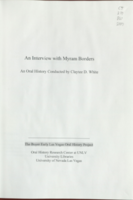
Transcript of interview with Myram Borders by Claytee D. White, February 9, 2009
Date
Archival Collection
Description
Text

Slide of the Bowers Mansion, Washoe Valley, Nevada, circa 1970s
Date
Archival Collection
Description
Image
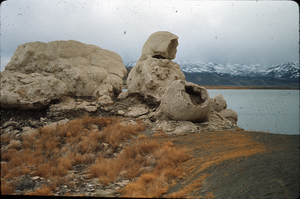
Slide of the rock formation known as The Squaw and Her Basket, Pyramid Lake, Nevada, circa 1970s
Date
Archival Collection
Description
Image
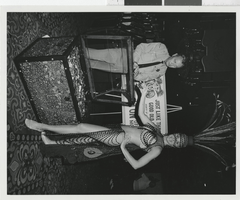
Photograph of a Minsky showgirl posing in front of a poster at the Aladdin Hotel, Las Vegas (Nev.), 1972
Date
Archival Collection
Description
Image
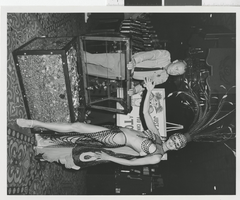
Photograph of a Minsky showgirl dropping coins into a trunk at the Aladdin Hotel, Las Vegas (Nev.), 1972
Date
Archival Collection
Description
Image
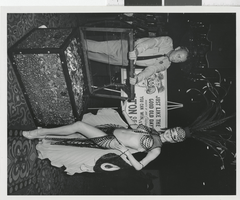
Photograph of a Minsky showgirl posing with a trunk of coins at the Aladdin Hotel, Las Vegas (Nev.), 1972
Date
Archival Collection
Description
Image
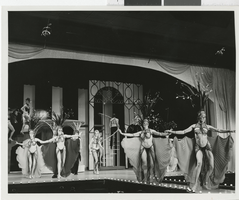
Photograph of Minsky's Burlesque at the Aladdin Hotel and Casino, Las Vegas, Nevada, 1972
Date
Archival Collection
Description
Image
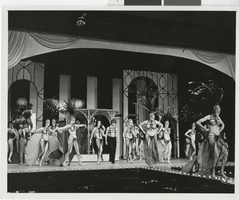
Photograph of Minsky's Burlesque at the Aladdin Hotel and Casino, Las Vegas, Nevada, 1972
Date
Archival Collection
Description
Image
